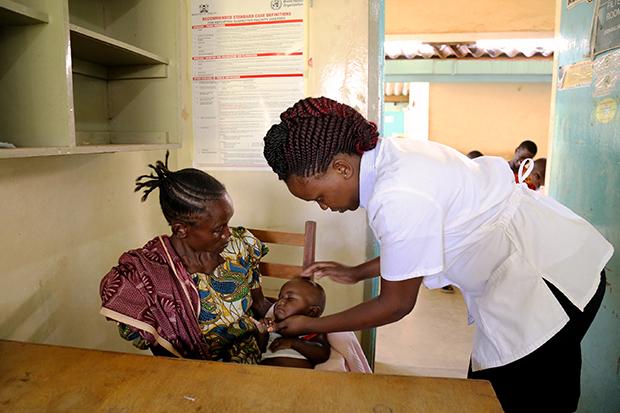Where We Work
See our interactive map


When Ebola hits a country, there’s no time to ”develop the health system” or ”build capacity,“ two terms that those of us working in global health toss around a lot. The country has to respond with the resources and systems it has in place.
If we’ve learned anything from the Ebola epidemic in West Africa and the price so many have paid with their lives, it is that we—the international community and individual countries—need to be ready. We know we can’t build resilient health systems overnight, but we can be prepared to scale up our health workforces to effectively and efficiently respond to disease outbreaks when they occur.
We think Kenya will be ready. Here’s why.
The government of Kenya has been working with IntraHealth International and other partners for nearly a decade to put in place processes and tools to assess health needs, determine the response required (and if an emergency medical response is necessary), identify health workers with the right skills, and quickly recruit and deploy those health workers where they’re needed.
There are no known cases of Ebola in Kenya today, but the government has been addressing a health crisis. With a population of 44 million people, Kenya has 2 doctors and 9 nurses or midwives per 10,000 people.
That’s just not enough. It’s not enough for an effective emergency medical response; it’s not even enough to provide adequate health services to Kenya’s population today. WHO recommends a minimum of 23 doctors, nurses, and midwives per 10,000 people to provide adequate access to care.
Northern remote counties of the arid and semi-arid land (ASAL) areas suffer the most. More than 30% of Kenyans live in these remote areas and only 2% of the country’s doctors, 2% of the country’s nurses, and 5% of the country’s clinical officers work there. Clearly the country has some catching up to do.
And it’s doing just that.
The government made a commitment in 2013 to recruit at least 12,000 new health workers per year by 2017. And government leaders are using and adapting processes they’ve developed in collaboration with partners such as IntraHealth International to keep that commitment.
Since 2006, IntraHealth has helped the government to contract health workers to staff health facilities throughout the country, focusing on rural and high HIV burden areas, and to reduce the time it takes to recruit and fill new positions. It used to take over a year. Now it’s three-and-a-half months. This is how we’ve done it:
Improving hiring and deployment processes may not seem like a big deal, but Kenya’s new processes allow health workforce planners and managers to target the right health workers—those with hard skills (technical and clinical) and soft skills (communication, decision-making, cultural sensitivity)—to provide excellent care and stability during an emergency.
Particularly in times of crisis, the health system needs as much stability as possible.The hiring processes now include screening techniques that recognize intangible characteristics associated with longevity and engagement, increasing the likelihood of retaining providers. The government has also worked hard to improve work environments and strengthen supervision systems so health workers have better support.
Based on an assessment of the Rapid Hiring Plan and Sustainable Workforce model, the ministry issued donor contracting guidelines that are already being used by other partners to recruit health workers in a manner that funnels contract workers into government workforces and increases the number of workers providing HIV and other health services.
Kenya is far from having an abundance of health workers, but even so,the country sent 170 to Sierra Leone, Guinea, and Liberia during the Ebola outbreak, adding momentum to the African Union and international Ebola response efforts.
There is no Ebola in Kenya—today. But we’ve learned no country is immune to any epidemic. SARS, H1N1, MERS, or a flu epidemic can only be addressed if we have strong health systems. Kenya has acted. With the health workers we’ve helped hire, Kenya is able to deliver better care now. And in the case of an emergency, it will have a faster, more coordinated, more effective response. Kenya will be ready.To learn more about the Rapid Hiring Approach, contact Meshack Ndolo at mndolo@intrahealth.org. To inquire about consulting services IntraHealth provides to country ministries, nongovernment organizations, and partners, contact Karen Stegman at consulting@intrahealth.org.
The Capacity Project, Capacity Kenya Project, and Human Resources for Health Bridge project were all funded by USAID. We would like to acknowledge Emma Owaka, Hannah Kimemia, Janet Muriuki, and others who worked with Mathew Thuku and Isaac Munene to design and implement the Rapid Hire and Sustainable Health Workforce Contracting program in Kenya.
Photo by Wycliffe Omanya for IntraHealth International (Nancy, a clinical officer, examines a baby with a high fever in the pediatric clinic. The Human Resources for Health Capacity Bridge project contracted Nancy to Kuria District Hospital in Migori County, Kenya.)
Get the latest updates from the blog and eNews




